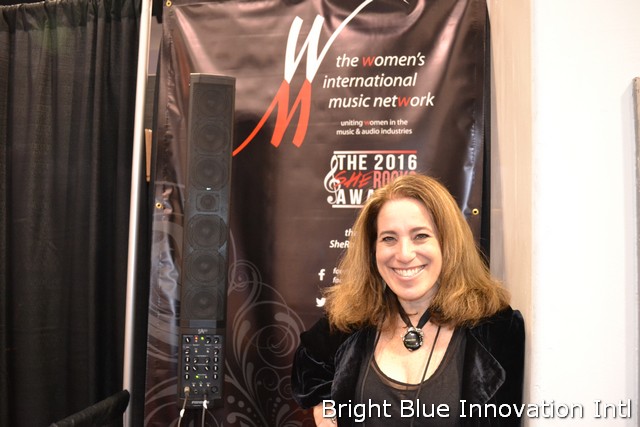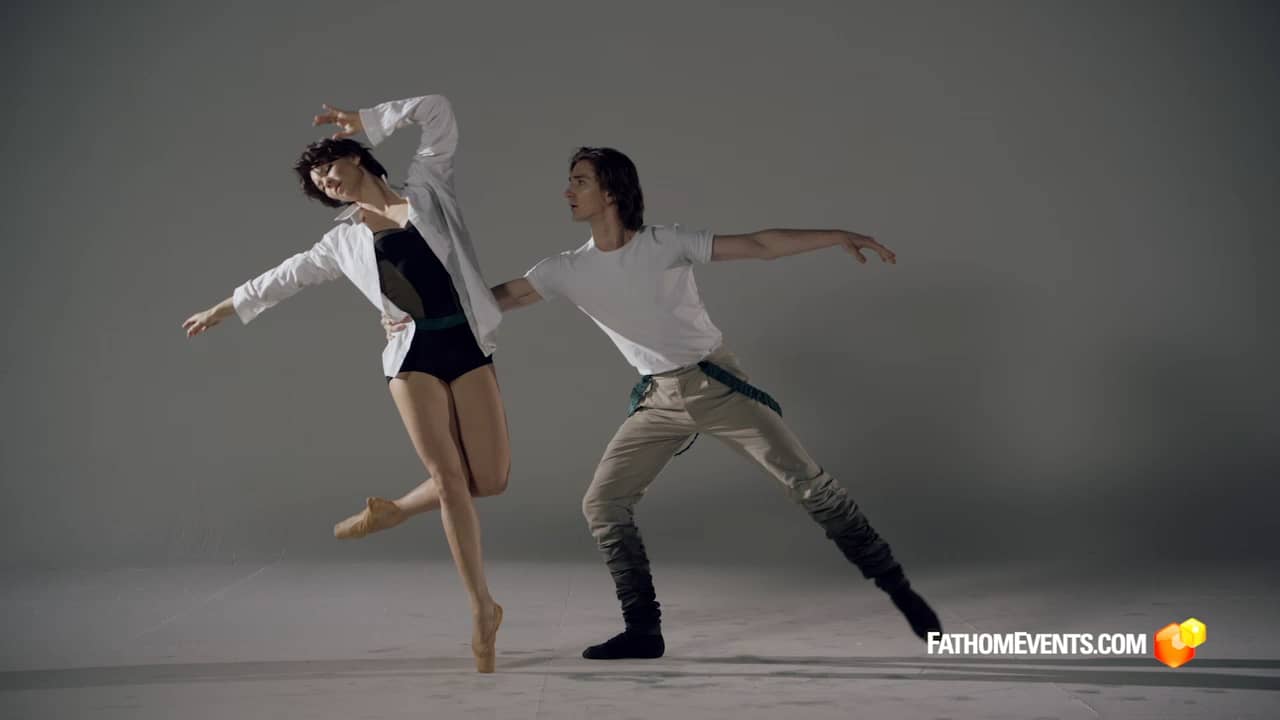
by Lidia Paulinska | Feb 14, 2016
January, NAMM 2016 – The Women’s International Music Network was founded in 2012 and it came about in an organic fashion, stated Laura Whitmore, its founder. As a journalist, she interviewed many female musicians and she came across the same stories again and again. One story literally blew her mind. Whitmore heard from a 70-years old female performer. After 50 years playing guitar, she still opens her performance with a killer guitar instrumental just to show right away that she knows what she is doing with her instrument. After f- i-f-t-y years, she still feels like she has to prove herself – said Laura stressing the number of years. There always are people who see female musicians as someone’s girlfriend and people who don’t believe that they can set up their own gears.
Those women have to prove themselves over and over again. There are definitely attitudes and discrimination – stated Laura – and women do not have full voice in the industry. She does not necessary feel that woman musicians are different than men, but there are concerns and issues that female musicians face than guys don’t. Her reporting on female musicians drove the development of the Woman’s International Music Network. In just a few years of existence. It has expanded and grown to encompass international outreach, expanding from operations in the US.
Laura is also the founder and host of the She Rocks Awards, now in its fourth year as a part of NAMM. The event is dedicated to paying tribute to woman who display leadership and stand out within the music industry. In the same way as The Women’s International Music Network, The She Rocks Awards event was developed naturally and organically from the curiosity to know other women in the industry. Laura who worked as a journalist and PR professional in the music for over 30 years, admitted that she did not know many women from that area, so she wanted to create an event for them to gather. Then someone told her – why not give those women the awards for their exceptional accomplishment? That how The She Rocks Awards started. The first year debuted as a breakfast event and then became the cornerstone, widely attended evening event with well-known music stars performing. Icons from this arena get recognition, and share their wonderful stories. The event also includes a silence auction and giveaways. The event sparkles with energy for a fun girl’s night out.

by Lidia Paulinska | Feb 14, 2016
January, Fathom events – Franco Zeffirelli’s classic production of Giacomo Puccini’s Turandot was presented by the Metropolitan Opera on January 30, 2016 and seen throughout the world in cinemas in 70 countries on six continents, compliments of Fathom events: “The Met: Live in HD” series.
Puccini’s final opera was first presented at Teatro alla Scala in 1926, two years after he had died, leaving an unfinished score. Zeffirelli has succeeded brilliantly in spinning this rather improbable fairytale (but aren’t all fairytales improbable) into a beautifully super-stylized Chinese fable with a mies-en-scene complete with enormous pagodas and richly imposing court scenes complimented with characters magnificently and lushly costumed and all of this imposing spectacle more than adequately filling the challenging 60’ x 60’ yawn of the Met stage’s proscenium.
Regarding the musical component of this total theatre equation, Soprano Nina Stemme was well matched to the extraordinary vocal demands of the title role. Her Turandot was strong and compelling, almost Wagnerian in it’s scope. Ably succeeding in thawing this iconic ice queen was heroic tenor Marco Berti in the role of the indomitable Calaf, answering as he did the three riddles that guaranteed Turndot’s ultimate affection. And finally, Anita Hartig’s moving interpretation of the self-sacrificing Liu was informed by a delicate, lyrical pathos complimenting the hopelessness of her unrequited love for Calaf.
But ultimately it’s all about the music, isn’t it? For after all, the audience, 4,000 strong (it’s the largest opera house in the world) leave the auditorium humming that famous Act III show-stopper “Nessun dorma” and of course the very word auditorium does mean “hearing place.” But is it in fact just for listening? Perhaps not, for as we know the word theatre is from the Latin theatron meaning “seeing place.” So it’s actually all about both “hearing” and “seeing” … all about both Puccini and Zeffirelli! And what a wonderful “hearing” and “seeing” experience this Turandot was!
by Lidia Paulinska and Hugh McMahon

by Lidia Paulinska | Jan 31, 2016
January, NAMM 2016 – His ideas and techniques influenced other musicians and innovators. His curiosity led him to the two most important parts of his career: music and electronics. This year, the Les Paul Foundation celebrated the 100th anniversary of the man who made a generous contribution to the music industry. Here are some facts about his life and accomplishments learned from the visit at Les Paul Exhibit, inside the big truck& trailer parked in front of the convention center in Anaheim during the NAMM 2016 show.
He was curious.
Les Paul (real name: Lester William Polsfuss) was born in 1915 in the small city Waukesha. As a kid he loved the music that came out of the radio and the phonograph. He wondered how they worked. Radio had only been around a few years and was just becoming the big thing. At age 10 he built his own crystal radio, that didn’t need a battery or electricity. And he was hooked forever. Soon he learned to play music on his guitar that he bought when he was about 11. He wondered if he could make it louder.
He was persistent.
As a young man of 26, Les went to Gibson with his solid body electric guitar, nickname “the log”. Despite its sweet tone and lack of feedback, Gibson turn it down, calling it a “broomstick with pickups on it”. Les spent the next 10 years trying to convince Gibson to build a solid body guitar. Les’ friend Leo Fender developed a solid body electric and gave Les a prototype. Les took the Fender Telecaster to Gibson, along with “the log”. “I believe the solid body guitar is going to be important, and if you don’t do something, Fender is going to rule the world.” Les finally persuaded Gibson to design what became one of the most famous guitars in the world, the Les Paul Standard.
He never took “No” for an answer. For a year, Les and his wife Mary Ford played different arrangements of “How High the Moon” everywhere they performed. After observing the audiences’ reaction, they recorded the one that had the best response. When Les told Capitol Records he wanted to release it, Jim Conkling, Capitol’s Vice President, objected. “There are already 85 records on “How high the Moon”, and none have made it.” But Les insisted it would be a hit. Capitol released the song around the end of March, 1951, and in two weeks it was its first number one hit as a duo, and it stayed on top for many weeks.
He had passion for music and electronics.
Today, computers make it easy to record multiple tracks, overdub and add effects. But Les had to figure out how to do it himself, inventing recording techniques so he had sound different from all others electric guitars players. He converted his garage into a recording studio and audio workshop.
When Capitol Records released the recording “Les Paul The New Sound” in 1948, modern music changed forever. Les Paul’s use of multiple overlaid audio tracks and innovative audio effects created a sensation with the listening public and musicians around the world. Les had truly created a “New Sound”.
Having the opportunity to learn about music and electronics at the same time was terribly important because it led him to the marriage between the guitar and the amplifier. Les’ Ampex 8-track machine “The Octopus” was seven feet tall and weigh 250 pounds. The Octopus was married to the mixing board Les dubbed “The Monster”. In 1956 Les told radio listeners that the audio signals were multiplied by the magic box called the “Les Paulveizer”. He was a Recording Wizard.

by Lidia Paulinska | Jan 31, 2016
January, Fathom Events – On January 24th, 2016, Fathom events presented the Bolshoi Ballet’s breathtaking, non-stop production of The Taming of the Shrew based on Shakespeare’s comedy, broadcast from Moscow to big screen cinemas throughout the United States.
The Bard’s tale deals with the beautiful Bianca who is much sought after by Lucento and many other suitors competing for her hand in marriage. However, she must wait until her older sister, the irascible and shrewish Kathrina is married first. Petrucio then comes on the scene, attracted by the reward offered by Katherina’s father to any man willing to marry his impossible daughter. Katherina, brilliantly interpreted by Ekaterina Krysanova, is eventually “tamed” by the determined Petrucio, masterfully performed by Vladislav Lantratov, who has taken up the challenge, thus winning the reward money and a new bride which in turn frees Bianca to marry a patient and grateful Luciento.
Choreographed by Frenchman Jean-Christophe Maillot especially for the celebrated and iconic Russian company, Maillot’s choreography is fast-paced yet subtle, simple yet filled with excitement and surprises, a smooth-flowing, circus-like style he characterizes as neither pure classical nor contemporary but uniquely “immediate” and existing in the moment.
The occasional frenetic movements of the dancers contrasted with moments of graceful, lyrical expression which might suddenly explode into breakneck athletic dancing bordering on the acrobatic, creates an excitement which is perfectly ignited by the powerfully poly-stylistic music of Soviet composer Dmitri Shostakovich, which not only serves to propel Kate’s frenzied, “shrewish” antics but also provides a driving force … a continuity and cohesiveness to the production.
Maillot’s Taming is imaginatively “book-ended” by the opening and closing scenes, the former functioning as a foreshadowing of the conflicts to come and the latter a peaceful expression of resolution and loving accord.
Before the curtain even opens to Act One, there enters a beautiful woman onto the stage in the role of a so-called “Housekeeper,” setting the “shrewish” tone of the act which is to follow by her overly-purposeful, condescending attitude. Dressed all in black and high-heels, she critically surveys the audience and the orchestra who are preparing to tune up. She then sits on the floor and slowly begins to remove her high-heels, methodically replacing them with pink ballet slippers, then slowly rising to once again peruse an intrigued audience, she begins to exit, suddenly pulling open the curtain to reveal a stark white stage with dancers poised to action! We are thus prepared to expect the unexpected.
By contrast, the final scene, again all in white, but this time conveying a tone of peace and tranquil camaraderie. Bianca now is married to Lucento and Kate to Petrucio and the entire cast delicately mime drinking tea, pinkies appropriately raised, to the tune of “Tea For Two”* from the 1925 Broadway musical No, No, Nanette, an absolutely perfect coda to an absolutely wonderful production. As with all of Shakespeare’s comedies, so to with the Bolshoi’s magic interpretation, love conquers all.
* N.B.: In 1927 Shostakovich wrote a new arrangement for “Tea For Two” after winning 100 rubles in a vodka-inspired bet he couldn’t re-orchestrate the song from memory in under one hour. He did it in 45 minutes! Bravo Maestro and bravo Bolshoi!
by Lidia Paulinska and Hugh McMahon

by Lidia Paulinska | Jan 29, 2016
Tough Tested Marine stereo earbuds with in-line mic are nicely package with some extras inside (including three tips and 3.5 mm extender) and clear description of the product and its use on the front and back of the box. That gives a customer good feeling about the product and suggests that the producer cares about the first impression. As well as printed certifications information that stated that the Tough Tested Marine earbuds are certified noise control earbuds, Noise Reduction Rating 26 Decibels as well as they hold IP67 rating to protect against dust/sweat and water. IP stands for “Ingress Protection” and is used to specify the environmental protection of enclosures around electronic devices. Number 6 means – Totally protected against dust, number 7 – Protected against the effect of immersion between 15cm and 1m.
There are also an exclusive EQ-Voice technology added to the features. If a phone call comes while listening the music, the equalizer automatically boost and clarify the voice of the caller. That is something that many earbuds are missing. There are some more about Marine earbuds or rather the cable. It is Kevlar reinforced for durability and it partly coiled what gives the extra length on the cable if is needed without danger of tangling.
The product comes in orange-black colors that bring to mind the association with construction work in tough harsh environment. And it is made for it. But if you are going hiking into the woods, boating on the river, fishing in the lake you need durable and rigid equipment that can handle harsh conditions and protect you from outside noise. You need the Marine earbuds. But they also gives you a comfort like soft silicon ear coding and nice texture.
The company that produces Marine earbuds, is already know of their durable power solution products and recognizable for safety features. Now it is entering the audio field.




